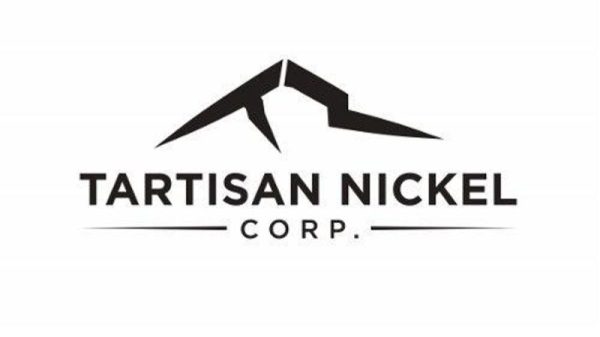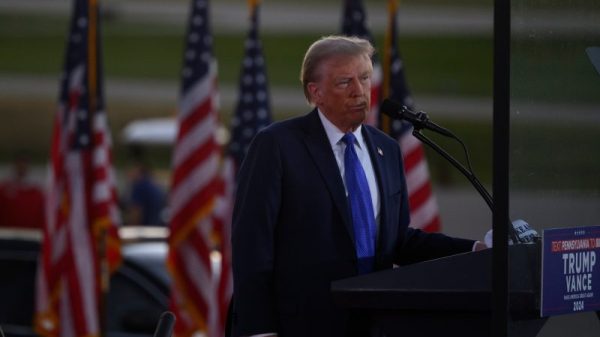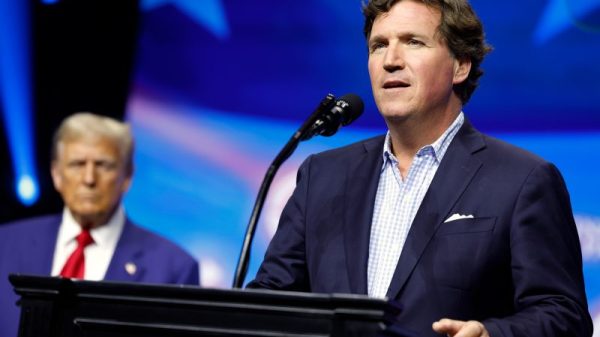The North American cannabis industry continued to demonstrate resilience in the first half of 2024, with recent data from market watchers showing a promising picture for the years ahead.
A Research and Markets report shows the North American market is seen experiencing significant growth, expanding from a size of US$35.6 billion in 2023 to a projected US$298.5 billion by 2032. This represents a substantial compound annual growth rate of 26.65 percent, indicating a remarkable increase in market value over the forecast period.
While the US and Canada still face challenges, the MJBiz Factbook says more than 48 percent of revenue-generating cannabis businesses expect the industry to perform “somewhat better” or “much better” in the next 12 months.
Read on to learn what moved the US and Canadian cannabis sectors in the first half of 2024.
Cannabis producers show signs of strength in H1
In the second quarter of the year, there were promising indications suggesting a potential recovery within the cannabis industry, following a period of challenges and difficulties. Many of the major cannabis companies reported strong revenue growth, suggesting that demand for cannabis products remains robust.
In its second and third fiscal quarters, Tilray (NASDAQ:TLRY,TSX:TLRY) achieved significant net revenue growth of approximately 30 percent over the previous year. In contrast, SNDL (NASDAQ:SNDL) reported a modest increase in annual net revenue of only 4 percent for its first quarter 2024 results.
Canopy Growth (NASDAQ:CGC,TSX:WEED) experienced moderate net revenue growth during its fourth fiscal quarter, with a 7 percent year-on-year increase. Cronos Group’s (NASDAQ:CRON,TSX:CRON) net revenue for the first quarter of 2024 showed a notable 30 percent growth compared to the previous year.
Green Thumb Industries (OTCQX:GTBIF,CSE:GTII) reported 11 percent net revenue growth over the prior year in the first quarter. Curaleaf’s (OTCQX:CURLF, TSX:CURA) net revenue in the first quarter represented 2 percent annual growth, while Verano (OTCQX:VRNOF) saw a 3 percent decrease in its yearly revenue during the same period.
Trulieve (OTCQX:TCNNF,CSE:TRUL), which announced plans to open 25 new stores in 2024, released its first quarter results on May 9. They revealed a 64 percent narrowing of net losses compared to the same period in the previous year. The company’s posted revenue of C$297.6 million exceeded analysts’ expectations of $285.9 million.
Canada’s federal budget disappoints cannabis companies
Canada’s 2024 federal budget disappointed hopeful cannabis operators across the country when it failed to include measures to support the cannabis industry.
Of particular significance is Canada’s high excise tax rate, which imposes C$1 per gram of cannabis or 10 percent of the producer’s selling price, whichever figure is highest.
Excise taxes have significantly burdened the industry, impacting the profitability of the legal cannabis business and forcing operators to drive up prices. This challenging financial environment has made it difficult for Canadian operators to expand, leading to a stifled market with only a handful of major competitors.
Although a government-appointed panel of experts recommended that the country reconsider how excise tax rates are applied, there was almost no mention of the cannabis industry in the 430 page budget document. Canada’s Tax Policy Branch also warned Finance Minister Chrystia Freeland that the excise tax was hurting Canadian companies.
The federal government also increased eight cannabis regulatory fees on April 1.
US cannabis prices beating expectations
Data shared from LeafLink and Cannabis Benchmarks shows wholesale cannabis prices in the US beating expectations for 2024, indicative of a maturing industry even if some markets continue to face pressure to compete.
LeafLink’s senior corporate development officer, Ben Burstein, told MJBizDaily he anticipates emerging markets will likely contribute to over 60 percent of retail sales in 2024 and 2025.
Roy Bingham, co-founder and CEO of BDSA, a company that provides cannabis data, told Cannabis Business Times that new markets on the east coast and in the midwest will contribute most greatly to US market growth — which accounts for roughly 56 percent of global cannabis sales — in the next few years.
Maryland, a newcomer to the market having begun recreational sales in July 2023, cleared US$700 million in first-year recreational sales, with total state-licensed recreational and medical sales surpassing US$1 billion.
Likewise, sales in Illinois surpassed US$1 billion for the second year in a row, and its market cap grew faster than in 2023.
Meanwhile, New York’s roll-out of its cannabis legalization process has been slower than many had anticipated, with delays in issuing licenses and setting up the regulatory framework. The state has only issued a limited number of licenses, with regulators prioritizing those most impacted by the war on drugs.
This approach has led to legal challenges from applicants who feel they have been unfairly excluded.
Kentucky, Minnesota and Ohio make cannabis strides
In January, Kentucky Governor Andy Beshar called for additional qualifying medical conditions to be added to the state’s medical cannabis program, which is set to take effect in 2025.
Kentucky State Senator Stephen West introduced Senate Bill 377 in March, which would include all terminal illnesses, HIV/AIDS, and glaucoma to the list of conditions that qualify for medical use of cannabis, among others.
The application process for medical cannabis business licenses began on July 1, and the state will implement a lottery system to award the first licenses in October.
In Minnesota, regulators tapped lawmakers to help roll out adult-use cannabis sales. Several proposals were considered, including pre-approving cultivators and speeding up the licensing process.
Adult-use sales are set to begin in Minnesota in 2025.
Finally, Ohio’s recreational marijuana market has seen a measured and steady rollout. After months of bureaucracy, the Joint Committee on Agency Rule Review issued no objections to proposed regulations that would allow medical cannabis dispensaries to apply for recreational licenses on May 13. Regulators issued the first 10 dual licenses on July 24.
US moves to reschedule cannabis
As the US cannabis market continues to evolve, legislative influence is shaping its trajectory, most notably the US Drug Enforcement Administration’s (DEA) official request to reschedule cannabis in May.
After a lengthy lobbying effort, the Associated Press reported that the DEA would move to reschedule cannabis to a Schedule III substance under the Controlled Substances Act on April 30.
The US Department of Justice (DOJ) announced the publication of Attorney General Merrick Garland’s Notice of Proposed Rulemaking in the Federal Register on May 16, opening up a 60-day public comment period that commenced on July 23.
In total, 43,000 comments were received during the comment period, overwhelmingly in support of measures that expand access to cannabis. Moreover, analysis conducted by the Drug Policy Alliance found that 69 percent of commenters were in favor of rescheduling cannabis altogether, meaning it would be entirely removed from the Controlled Substance Act’ or legalized at the federal level, reflecting an evolving public perception of cannabis.
If no objections arise, the DEA and DOJ will review public comments and finalize the rule’s publication. Opponents can file a lawsuit within 30 days, and a hearing will be held by an administrative law judge chosen by DEA Administrator Milgram, who has yet to sign the May 16 notice.
Farm Bill amendment may redefine hemp
Another legislative development impacting the US cannabis industry is an amendment to the 2024 Farm Bill proposed by Rep. Mary Miller (R-Ill.) on May 22. It aims to redefine hemp to exclude certain hemp-derived cannabinoids.
According to data gathered by the Brightfield Group for Cannabis Business Times, the market for hemp-derived cannabinoids has exploded by 1,283 percent in three years, although public health experts have warned that some of these compounds, particularly Delta-8 THC, could be harmful to underage users.
If made law, Miller’s amendment would effectively criminalize many hemp-derived products by excluding any cannabis seeds or derivatives with a total THC concentration exceeding 0.3 percent from the legal definition of hemp.
It would also restrict the sale of seeds and flower with higher THC levels, as well as the sale of any synthesized or manufactured cannabinoid. These developments could have far-reaching consequences for the hemp industry, and significant implications for the research and development of cannabis products.
On May 23, the House Committee on Agriculture voted to include Miller’s amendment in a new draft of the 2024 Farm Bill. A vote has been scheduled to take place on or before September 30.
More recently, on July 9, the House Committee on Appropriations passed legislation that would prevent the DOJ from using its funds to reschedule cannabis. The legislation covers Commerce, Justice, Science and Related Agencies, and there is concern that is the bill would further delay or prevent the rescheduling of cannabis.
Looking ahead
As the legal landscape surrounding cannabis continues to shift, more states are making strides toward creating medical and recreational cannabis markets. Nebraska, North Carolina and Wisconsin are among those pushing for cannabis reform, indicating a growing momentum for legalization across the country.
Meanwhile, the SAFER Banking Act, which is aimed at addressing the financial challenges faced by cannabis business owners, remains stalled in the House of Representatives. Despite this setback, key lawmakers like Chuck Schumer remain committed to passing the bill, emphasizing its importance ahead of the upcoming election.
Vice President Kamala Harris has a history of supporting cannabis legalization, while Trump’s stance on the issue of cannabis specifically remains vague; however, his tough stance on illegal drugs aligns with the Republican party’s traditional opposition to drug reform. In the forthcoming election, market players must pay close attention to the candidates’ stance on cannabis policy.
Securities Disclosure: I, Meagen Seatter, hold no direct investment interest in any company mentioned in this article.

































